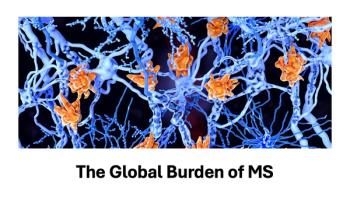
AHA's Top Heart Disease and Stroke Research in 2020
The America Heart Association compiles a rundown of pivotal research advances every year. Here are the developments that the AHA listed this year:
A unique therapy could transform how hypertrophic cardiomyopathy is treated.
About one in every 500 people has hypertrophic cardiomyopathy, a condition in which the heart muscle thickens and may stiffen, making it harder for the heart to pump blood. Most people with the condition have the obstructive version of the condition, which is characterized by impeded blood flow from the left ventricle to the aorta. These patients are at risk for life-threatening arrhythmias as well.
Current medicines often don't work, don't target specific characteristics of the condition, or aren't well tolerated by patients.
A phase 3 study,
The benefit of mavacamten over placebo was apparent regardless of patient age, gender, body mass index, use of beta blockers and baseline measurements of health and well-being, the research team reported in The Lancet.
More treatment isn't necessarily better treatment in coronary heart disease
Until recently, doctors lacked clarity on how best to treat moderate or severe ischemia in patients with stable coronary heart disease.
But a massive international trial explored whether early, aggressive care involving coronary angiography to visualize reduced blood flow to the heart, plus bypass surgery or coronary intervention to improve blood flow when needed, could prevent more heart problems and heart-related deaths than could initial treatment with medicines alone.
The trial, known as
A related trial,
In the trial, among 777 patients with severe loss of kidney function — defined as an estimated glomerular filtration rate below 30 ml/min/1.73m2 — and moderate or severe ischemia, those treated more aggressively had about the same risk of dying or having heart attacks as those treated just with medication. Also, the more aggressive approach was linked to more than triple the risk of stroke.
New findings may reshape the first line in the treatment of atrial fibrillation
Two studies described in the New England Journal of Medicine suggested more active treatment strategies within a year of diagnosis can moderate the grave health consequences of atrial fibrillation.
One international trial,
Patients whose early treatment included restoring the heart to a normal rhythm were 21% less likely to have a stroke; be hospitalized with heart attack, related conditions or worsening heart failure; or die from heart disease. Rhythm control therapy included use of antiarrhythmic drugs and ablation, which scars heart tissue to disrupt electrical signals and correct the rhythm.
The second study, called
America has a growing hypertension problem
While overall prevalence of hypertension has crept up to 46% in recent years, recent studies highlight the threat of high blood pressure in pregnancies, a broader struggle to control the condition and gaps in scientists' understanding of its underpinnings.
In a
Another study, encompassing two decades and more than 18,000 people, found that after improving from 2000 to 2008 and then leveling off, the proportion of all Americans with controlled hypertension appears to have declined by 2018 — leaving more patients with uncontrolled blood pressure at risk for cardiovascular, kidney, vision and other health problems.
In this study, about 44% of U.S. adults with hypertension had the condition controlled in 2017-18,
A third,
The study, published in the Annals of Internal Medicine, tested over 1,000 patients at four U.S. academic medical centers. Not only was primary aldosteronism more prevalent than expected, but researchers found a "continuum" of aldosterone overproduction that paralleled increasing hypertension severity among people with normal blood pressure, untreated stage 1 and 2 hypertension, and treated, resistant hypertension. This suggests a potential role of aldosterone in high blood pressure that has no apparent cause.
Sometimes a diabetes drug isn't just a diabetes drug
That appears to be the case with a class of medicines called SGLT2 inhibitors, which are used to treat type 2 diabetes but also can reduce serious renal problems and heart failure hospitalizations.
Studies in 2020 highlighted these benefits of kidney function preservation and reduction in heart failure hospital visits regardless of whether participants had type 2 diabetes, suggesting the drugs could change the landscape in treating patients without diabetes with those conditions.
One trial,
Among the people given the placebo, 14.5% experienced a steep, sustained decline in kidney function, end-stage kidney disease or death from kidney or cardiovascular causes. That compared with just 9.2% of the patients given dapagliflozin, scientists wrote in the New England Journal of Medicine.
A
More than 3,700 people received empagliflozin (Jardiance) or a placebo on top of usual heart failure care for a median period of 16 months. About one in four patients in the placebo group were hospitalized for worsening heart failure or died of cardiovascular illness, compared with only one in five participants receiving the drug.
Findings from two other trials, presented at Scientific Sessions and published in the New England Journal of Medicine, showed benefits of another SGLT2 inhibitor, sotagliflozin (Zynquista).
The
The second study,
Groundbreaking therapies aim to tame troublesome cholesterol levels
Three such therapies were described in the New England Journal of Medicine.
One uses RNA interference, a cutting-edge approach that deploys molecules called small interfering RNAs (siRNA) to switch gene expression on and off. In a
Together the studies involved nearly 3,200 patients, most of whom had cardiovascular disease due to plaque buildup in the arteries.
Another study focused on high levels of an LDL variant called lipoprotein(a), known as Lp(a), which has been linked to cardiovascular illness including heart attack, aortic stenosis and stroke. Trying to lower them has been a challenge: Lp(a) concentrations are largely set by genetics and unaffected by lifestyle.
But
Nearly 300 patients with heart disease and high Lp(a) received the therapy for six to 12 months. The higher the level of the therapy given, the more patients' average Lp(a) dropped.
Researchers also are logging progress in treating a rare, deadly condition called homozygous familial hypercholesterolemia (HoFH), a genetic defect inherited from both parents results in extremely high, unmanageable levels of LDL, resulting in heart disease at a young age.
In the
Stroke prevention studies highlight diverse tactics
One approach targets carotid stenosis, a plaque buildup inside arteries in the neck that is a major cause of stroke.
Carotid stenosis often is treated with direct surgery on the affected carotid artery. The new study, dubbed
Doctors tested a minimally invasive procedure called transcarotid artery revascularization (TCAR). In TCAR, a sheath is placed in the carotid artery through a small neck incision. Blood flow is temporarily reversed to ensure breakaway plaque isn't carried to the brain. The vessel is opened with a balloon catheter, and a stent is placed to improve blood flow.
Just 1.7% of patients whose care followed the study protocol had a stroke or heart attack or died within 30 days of the procedure, researchers reported in the journal Stroke. The results compare favorably with data from studies of open surgery and another minimally invasive procedure, which accesses the carotid through the femoral artery, the scientists said.
Another study, nicknamed
In about 11,000 patients receiving aspirin alone or the drug ticagrelor plus aspirin, the combination treatment was linked to a 17% lower risk of death or any type of stroke within 30 days.
People who've had a recent ischemic stroke or mini-stroke and have plaque buildup affecting blood flow to the brain or heart might also benefit from lower target levels for LDL, according to another study published in the New England Journal of Medicine.
Researchers in France and South Korea
There are many steps to take toward better health
Two recent studies highlight the potential benefit of high daily step counts.
The research, published in the New England Journal of Medicine, involved U.S. adults 40 and older who wore an accelerometer for up to seven days — on average, more than 14 hours a day.
Researchers focused on about 900 people as part of the expansive Framingham Heart Study. For every 1,000 daily steps a watch tracked, the participant's predicted cardiovascular risk for the next decade was 0.18% lower. The effect was smaller in women (0.13%) than in men (0.28%) and disappeared in women when BMI was taken into account.
Science is just beginning to shed light on COVID-19's mysteries
One key question has been whether ACE inhibitors and ARBs might leave patients more vulnerable to the virus — or, alternately, might help protect them from its ravages.
There are rationales for both possibilities. But
Meanwhile, the AHA's COVID-19 Cardiovascular Disease Registry is answering other vital questions.
In a study of patients at 88 hospitals in the registry,
Another study found that
Both registry studies were presented at the virtual Scientific Sessions and published in the AHA journal Circulation.
Don't forget the flu
Flu is hard on the heart.
In a
Among those patients, 31% required intensive care and 7% died, researchers wrote in the Annals of Internal Medicine. Investigators noted the findings emphasize the importance of increasing flu vaccination rates.
At Scientific Sessions and in the Journal of the American Medical Association, describing a study of 5,000 North American patients with heart disease, researchers reported that a high-dose, trivalent flu vaccine was
Newsletter
Get the latest industry news, event updates, and more from Managed healthcare Executive.






















































